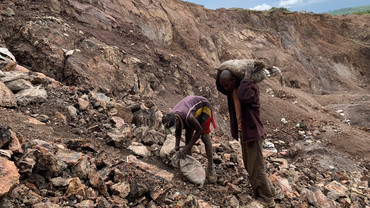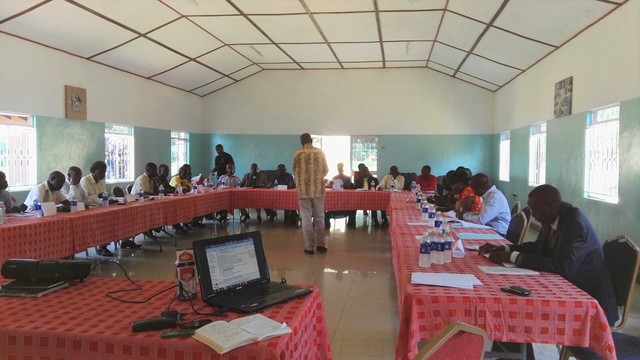Mining in the deep-sea bed: are we ready?
International law designates the deep seabed as the “common heritage of mankind”, but poorly regulated mining could cause irreparable damage to such a fragile ecosystem. Erika Solimeo and Brendan Schwartz argue that the International Seabed Authority needs a moratorium on mining extraction licences.



These cars in downtown Lanzhou are part of efforts to reduce CO2 emissions in China. But electric cars require nearly 10kg of cobalt per vehicle, which may encourage increased deep-sea mining (Photo: Tim Zachernuk, Creative Commons, via Flickr)
Deep-sea mining (DSM) is a fast-developing frontier of mineral exploration and, soon, commercial extraction. Improved technologies and an emerging international legal framework could mean large volumes of minerals such as cobalt, manganese and copper will soon be scooped off the ocean floor by robots.
The International Seabed Authority (ISA), which has the mandate to administer and regulate deep-sea mining in 'Areas Beyond National Jurisdiction' (ABJN), has been developing draft regulations (PDF) to govern the extraction of minerals. While deep-sea mineral exploration is taking place within the national jurisdiction of a few countries, to date the ISA has granted 29 exploration licences in the ABNJ to companies hoping to start extraction once the mining code is finalised in 2020.
Do we need deep-sea mining? Competing visions
Pro-mining governments and companies promote deep-sea mining as essential for sustaining our highly digitalised society and the booming market of green technologies (such as solar panels, wind turbines and electric vehicles). As electric cars require nearly 10kg of cobalt per vehicle, and China alone is planning to produce more than four million hybrid cars in the next decades, there will be a significant surge in the demand for new raw materials.
In contrast some governments are more interested in the technological advances generated by deep-sea mining than the actual minerals. Proponents also claim that underground minerals are becoming scarcer and of poorer quality which, coupled with the negative social impacts generated by onshore mineral extraction, makes it worth looking to the deep seabed.
However, growing numbers of academics, conservation groups and some governments remain sceptical about the need for DSM. Two common arguments from this camp emphasise that:
- Stronger policies on industrial product design and recycling would reduce the need for minerals drawn from the deep-sea bed, and
- There is scientific uncertainty (PDF) about the true long-term impacts of DSM, but preliminary evidence suggests that disturbances to deep-sea ecosystems could require “many decades to millions of years” to recover. It might be impossible to remediate negative impacts.
The legal case for a moratorium
The United Nations Convention on the Law of the Sea (UNCLOS), the treaty governing the ABJN, states that resources in the deep seabed are the “common heritage of mankind”. It also sets out an obligation, among others, to conserve the marine environment and equitably share benefits derived from the sea.
These responsibilities have an intergenerational dimension. The trouble is that the world has invested very little scientific research to understand the deep seabed and its role in healthy ocean ecosystems; if DSM went ahead, we would have an insufficient understanding of its true impacts.
The precautionary principle
Given the state of scientific knowledge, it will be difficult for the ISA to implement both its environmental mandate and license deep-sea mineral extraction. Arguably, the application of the precautionary principle (PDF) would call for a moratorium on DSM in the ABJN until adequate scientific knowledge, suitable legislation and robust institutions can deliver proper oversight of the sector.
With so much uncertainty, the precautionary approach would benefit everyone and buy time to enable the implementation of a scientifically-informed legal and contractual framework that protects the “common heritage of mankind”
The Law of the Sea is not new to international moratoria, which have managed scientific uncertainties around the potential impacts of ocean fertilisation (PDF), mining activities in Antarctica and to combat the depletion of whale stocks. Already, precautionary approaches for deep-sea mining are being considered in the waters of Mexico, New Zealand (PDF), Australia (PDF), Namibia (PDF) and the European Union.
Building strong institutions and improving transparency
A moratorium would also allow all actors to assist in building the institutional capacity of the ISA, by means of its strategic plan, and fine-tune the necessary legal frameworks. Political economy analysis of past attempts to govern natural resource extraction has revealed the importance of 'sequencing (PDF)' – the idea that strong institutions must be built (PDF) prior to the commencement of extractives licensing and operations.
While the ISA is taking important steps to improve governance of DSM, evidence from prior experiences suggests that developing capacity to regulate the environmental impacts of mining is a long-term endeavour. There have also been questions about the transparency of rule-making since the legal and technical commission drafting the rules meets in closed-door sessions.
Regulatory stability and DSM – a catch-22
The provision of broad regulatory stabilisation guarantees – a common practice in the mining industry, intended to create a predictable investment climate for DSM contactors – could backfire. The ISA’s working draft on standard mining contract terms (PDF) includes clauses (sections 5 and 6) that could be interpreted to allow for the ISA to revise environmental standards over time.
But other provisions (section 39 and draft regulation 59) state that, if applying new rules involves revising contract terms, this can only be done with the consent of the mining company. Depending on how these provisions are interpreted, the application of new environmental rules could depend on the goodwill of each individual company.
Given the dynamic nature of technological change and scientific knowledge, it is highly likely that the ISA will need to regularly update DSM environmental regulations, and it is important that stabilisation commitments do not get in the way.
Buying valuable time
With so much uncertainty, the precautionary approach would benefit everyone and buy time to enable the implementation of a scientifically-informed legal and contractual framework that protects the “common heritage of mankind” while creating a sound investment climate for private companies.
There is also a strong case for ensuring the legal regime is flexible enough to allow for standards to be adjusted in light of our evolving understanding of this precious ecosystem.




